Introduction
Welcome to Spain, a country of vibrant contrasts, rich history, and diverse landscapes. From the rugged mountains of the north to the sun-soaked coasts of the south, Spain offers more than just a monolithic cultural experience. This guide is designed to unravel the splendid tapestry that makes up Spain, offering a glimpse into the distinctive regions that create a nation celebrated for its colorful diversity and dynamic heritage.
Understanding Spain’s geographical diversity
Upon setting foot in Spain, one is immediately struck by its geographical diversity. This is a land where climates, terrains, and atmospheres change within mere miles. The northern regions, for example, are often defined by lush greenery and a more temperate climate, a stark contrast to the sun-baked southern coasts known for their warm Mediterranean breezes and Moorish architectural influences.
In the north, the fierce waves of the Atlantic Ocean shape both the rugged cliffs of Galicia and the cultural identity of the Basque Country, with its unique language and culinary traditions. Moving towards the Pyrenees, the landscape ascends into breathtaking peaks that have long served as natural fortresses and cultural bridges with neighboring France.
Contrastingly, the heart of Spain presents the meseta, a vast plateau characterized by extreme temperatures, historic castles, and the vibrant capital city, Madrid. This central part of the country is a reminder of the historical expanses of the old Castilian kingdom, around which modern Spain was unified.
Southern Spain sings a different tune. Here, the legacy of Al-Andalus lingers in the architecture, the food, and even the language. The scent of orange blossoms fills the air in Seville, while the Alhambra in Granada stands as a monumental testament to a richly layered past. And beyond the Iberian mainland, the archipelagos of the Balearic and Canary Islands offer paradisiacal escapes that blend African, Latin, and indigenous Guanche influences.
Each geographical area presents its own set of customs, traditional dress, gastronomy, and even dialects or languages, contributing to a rich, diverse cultural mosaic unlike anywhere else in the world.
The cultural tapestry of spanish regions
Diversity in Spain is not only etched into its landscapes but also woven into the cultural fabric of its people. This cultural tapestry has been shaped by a history of various settlers—Romans, Visigoths, Moors, and Christians have all imprinted their identity onto different facets of Spanish culture.
From the Celtic traditions in the northwest to the strong Roman heritage visible in cities like Merida and Tarragona, history whispers through the streets of Spain. The Moorish influence beams in the intricate tiles of southern Spain, while the Reconquista’s legacy of Christian fortresses and cathedrals speaks to centuries of religious fervor and conflict.
Moreover, regional pride swells in areas with distinct languages. Apart from Castilian Spanish, the country’s co-official languages—Catalan, Basque, Galician, and Occitan—highlight the enduring spirit of Spain’s autonomous communities. These languages are not merely dialects but significant cultural pillars that have spurred movements for regional autonomy and recognition.
Culinary delights, too, vary significantly as one travels through different regions. While paella and tapas can be found nationwide, many regions boast their own signature dishes, from the seafood-laden dishes of Galicia to the hearty, meat-centric meals of the interior, and the olive oil-drenched cuisine of Andalusia.
Each region, with its unique blend of history and innovation, contributes indispensably to the vibrant jigsaw of cultures that is contemporary Spain. This guide aims to introduce each distinctive area, providing travelers with a sense of the marvelous complexity and distinctive charm that each region has to offer. From the green-coated mountains and coasts of the north to the historical mystique of the south, Spain invites exploration and the continual rediscovery of its diverse identity.
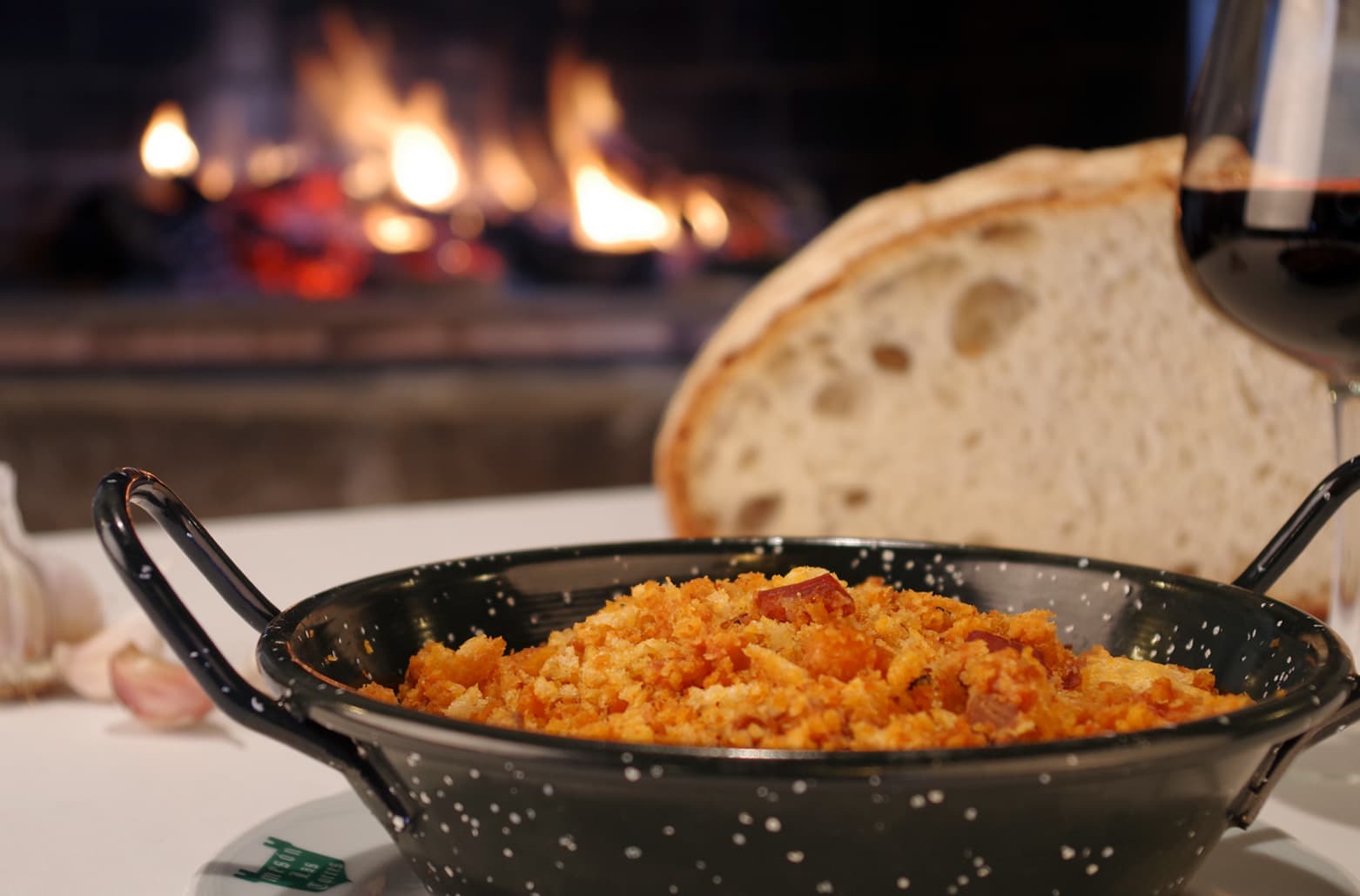
Northern Spain: Between green mountains and striking coastlines
Embarking on a journey through Spain’s diverse landscapes, we find ourselves in the verdant realms of Northern Spain, a territory marked by its lush greenery, imposing mountains, and dramatic coastlines. Unlike the typical sun-soaked images of southern coasts, the north offers a deeply atmospheric experience, rich with cultural nuances, culinary feats, and ancient tales spun through time.
The Basque Country: Industrial powerhouse and gastronomic titan
Nestled between rugged mountains and the sweeping Bay of Biscay, the Basque Country (Euskadi) presents a compelling blend of industrial might and a deeply rooted cultural identity. Renowned for its economic vigor, this region is a force of industrial and technological innovation. Yet, beyond the urban hustle, there lies an intrinsic connection to a unique heritage, language (Euskera), and a world-acclaimed gastronomic scene.
Bilbao, with the iconic Guggenheim Museum, stands as a testament to the region’s leap into modernity, while San Sebastián shines with its culinary brilliance, boasting a high concentration of Michelin-starred restaurants and being a mecca for food enthusiasts dedicated to the pintxo (Basque tapas) culture. The region’s gastronomy is an artful balance between avant-garde innovation and the preservation of traditional, quality ingredients. A visit to a ‘txoko’, traditional gastronomic societies, reveals the social ritual of food in maintaining regional bonds. Moreover, the Basque coast, with its surfer-friendly beaches and dramatic cliffs, complements the cultural depth with natural allure.
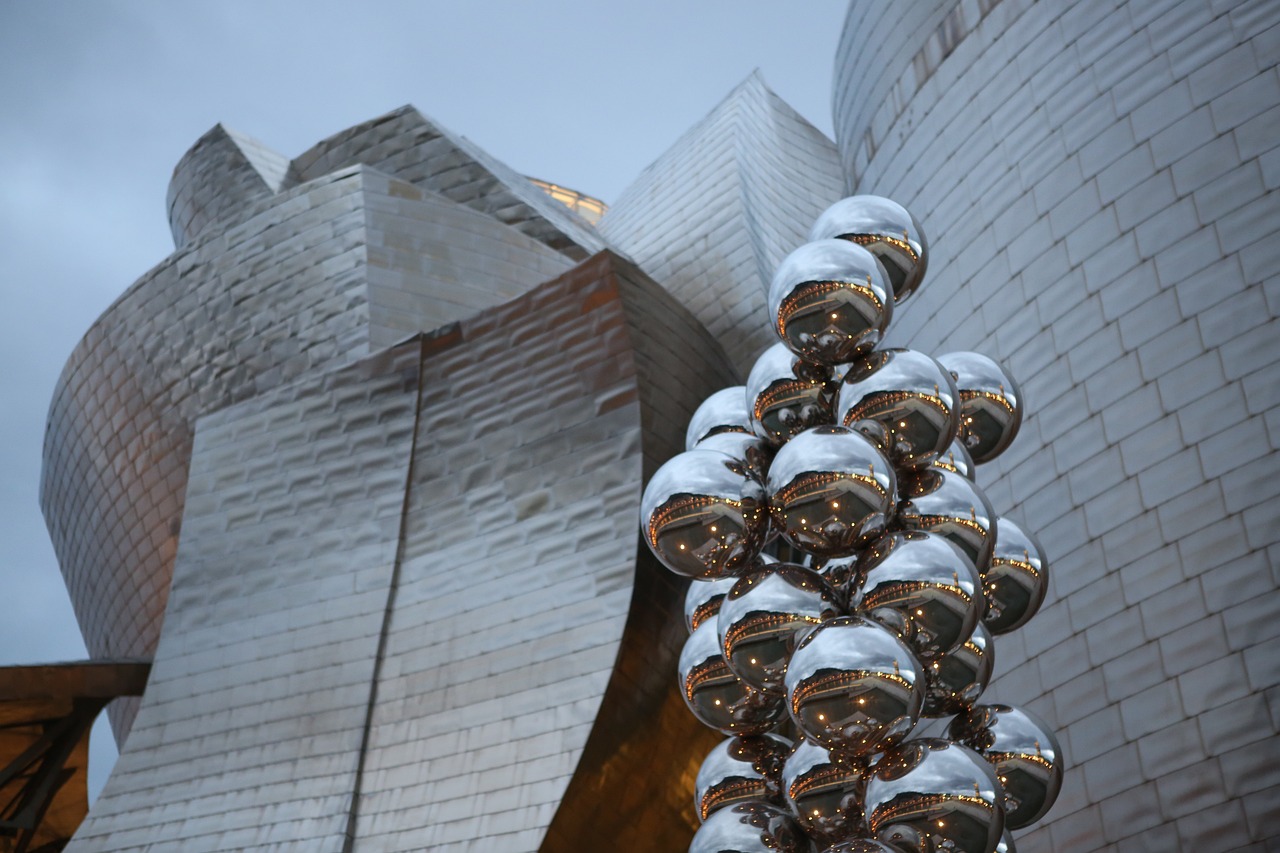
Cantabria: Nature’s haven
Moving east, we encounter Cantabria, a treasure trove of natural wonders, from the dizzying peaks of the Picos de Europa to the serene waters of the Bay of Santander. This region is a sanctuary for nature lovers, offering a plethora of outdoor activities such as hiking, caving, and wildlife watching. It’s a place where the mountains meet the sea, creating landscapes of arresting beauty.
Santander, the elegant coastal capital, beckons with its refined beaches and the cultural richness displayed at the Centro Botín. Moreover, Cantabria’s historical legacy is etched into the prehistoric caves of Altamira, with their stunning ancient cave paintings, inviting a step back into humankind’s artistic beginnings.
Asturias: A blend of pastoral and maritime heritage
Asturias, known as “Spain’s natural paradise,” unfolds with its pastoral landscapes, rustic villages, and an indomitable maritime heritage. The region’s rugged coastlines are interspersed with secluded coves and expansive beaches, while the inland areas are adorned with towering mountains and deep valleys, making it an ideal destination for adventurers and relaxation seekers alike.
The region’s capital, Oviedo, offers architectural splendor with its pre-Romanesque churches, while the larger city of Gijón provides a lively atmosphere with its vibrant port and innovative cultural scene. Asturias is also a land of traditional cider houses (‘sidrerías’) and hearty cuisine, with dishes like the renowned ‘fabada’ stew offering a taste of the local fare.
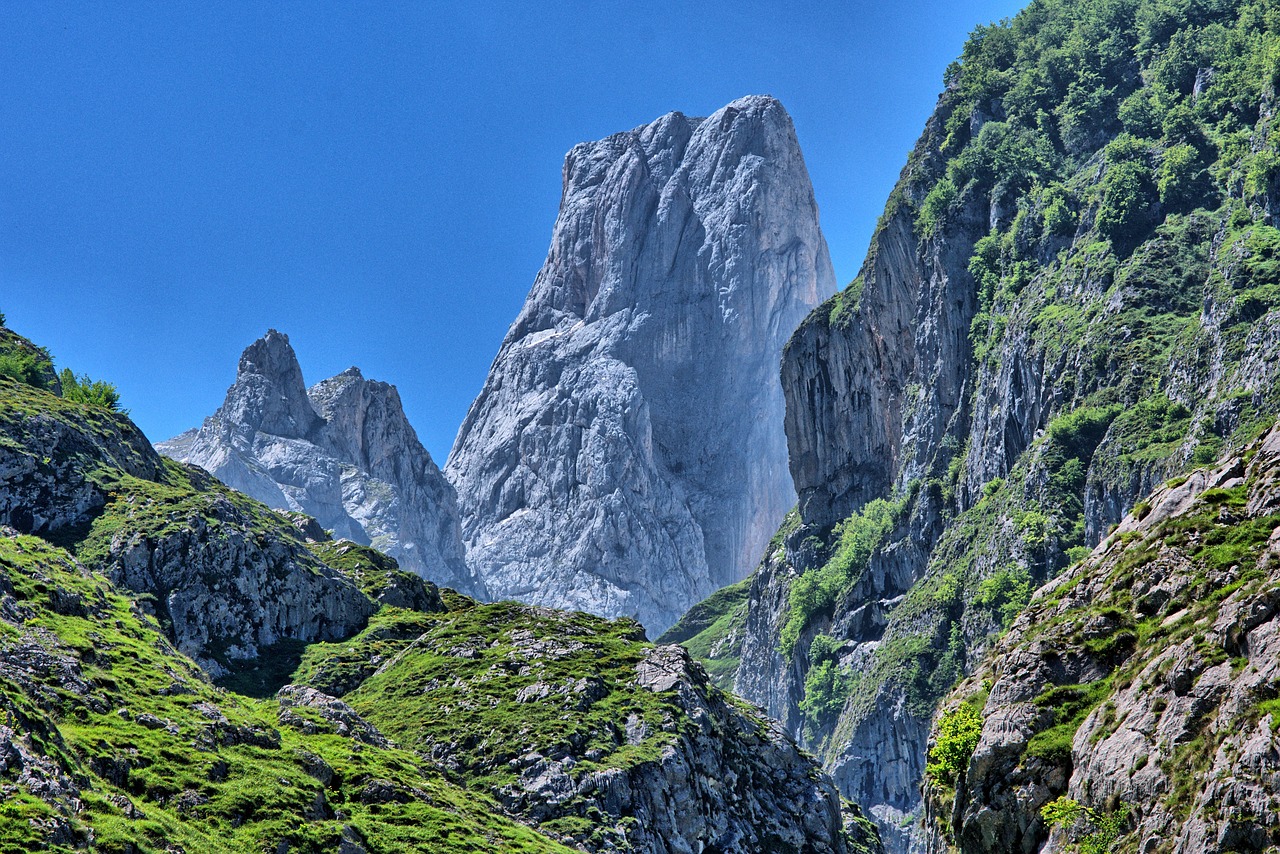
Galicia: The realm of seafood and ancient legends
At the northwest corner of Spain, Galicia captivates with its mystical allure, infused with ancient legends and a strong maritime character. Its deeply indented coastline, the ‘Rías Baixas’, is a maze of tidal inlets with calm waters and bountiful seafood, shaping the Galician diet and culture. The city of Santiago de Compostela, the final destination of the legendary Camino de Santiago pilgrimage route, is a jewel of medieval architecture and spiritual energy.
Beyond Santiago, the cities of A Coruña, Vigo, and the Roman walls of Lugo each add distinct layers to Galicia’s cultural mosaic. The region is a symphony of green landscapes, adorned with age-old ‘horreos’ (granaries) and cruceiros (stone crosses). The traditional ‘pazos’ (manor houses) and the ever-present sounds of bagpipes underscore the Celtic influence that distinguishes Galicia from other Spanish regions.
From the fiery rhythms of Basque culture to the soothing greenery of Galicia, northern Spain is a testament to the country’s multifaceted identity, a place where every mountain and every stretch of coastline tells its own enduring story. Each region, with its dialects, traditions, and culinary delights, contributes to a rich tapestry that promises travelers an immersive journey through history, gastronomy, and natural beauty.
The heartland: Central Spain and its timeless allure
In our exploration of Spain’s multifaceted regions, we delve into the soul of the country, the sprawling expanse known as Central Spain. This area, characterized by its vast plateaus and historical grandeur, invites travelers to walk through pages of history, art, and cultural revolutions, all set against the backdrop of its timeless allure.
Madrid: The dynamic capital
At the heart of Spain pulses Madrid, a city that marries the country’s historical lineage with its modern aspirations. As the nation’s capital, Madrid is a bustling metropolis infused with artistic treasures, culinary inventions, and night-time fervor. Visitors are beckoned by world-renowned institutions such as the Prado Museum, housing masterpieces from Spanish titans like Velázquez and Goya, and the Reina Sofia Museum, the sanctuary of Picasso’s harrowing “Guernica.”
The city’s lifeblood circulates through the veins of its lively squares and corridors, from the grandeur of Plaza Mayor to the verdant escapes within El Retiro Park. Madrid’s culinary scene is a revelation in itself: from traditional taverns serving ‘cocido madrileño,’ a hearty chickpea stew, to avant-garde establishments pushing the boundaries of modern gastronomy. Here, every street corner has a story, and the relentless energy of Madrileños carries you through flamenco tablaos, vibrant marketplaces, and serene historic quarters.
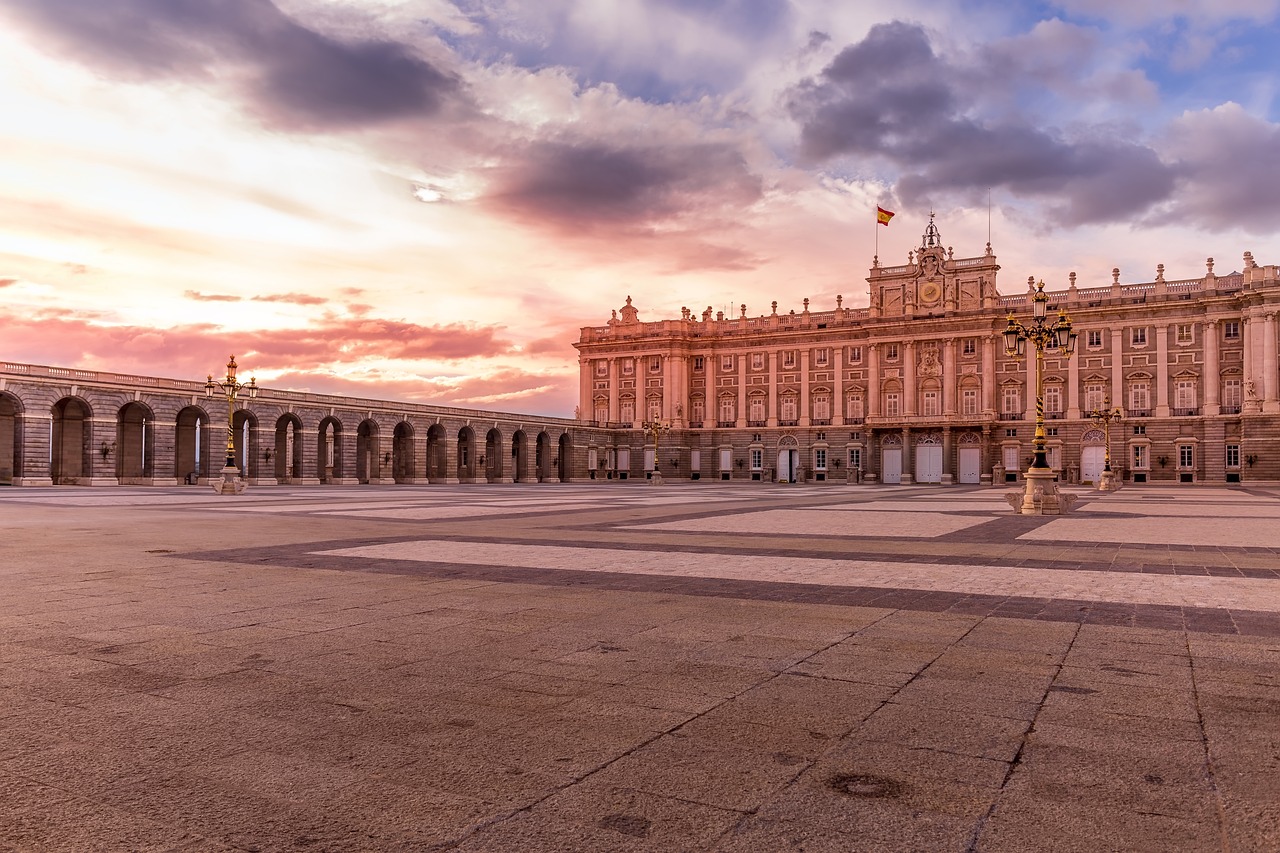
Castilla y León: The birthplace of castilian spanish
Northwest of Madrid, the expansive region of Castilla y León unfolds as the cradle of Castilian language and a significant chapter of Spain’s medieval history. This region is a tapestry of majestic old cities, each a testament to the architectural grandeur and historical events that shaped the nation.
From the gothic splendors of Burgos Cathedral to the monumental walls of Ávila, and the University of Salamanca, which illuminated Spain during the Renaissance with intellectual prowess, Castilla y León breathes history. The region’s vast, golden-hued fields and vineyards are intersected by the famed Camino de Santiago, leading pilgrims through landscapes that feel bound to ancient times.
Leon, with its staggering stained glass-adorned cathedral, and Segovia, with the awe-inspiring Roman aqueduct and fairy-tale Alcázar, are quintessential stops in understanding Spain’s historical narrative. Furthermore, the culinary journey here is marked by robust flavors, with specialties including roasted lamb and ‘morcilla,’ a flavorful blood sausage.
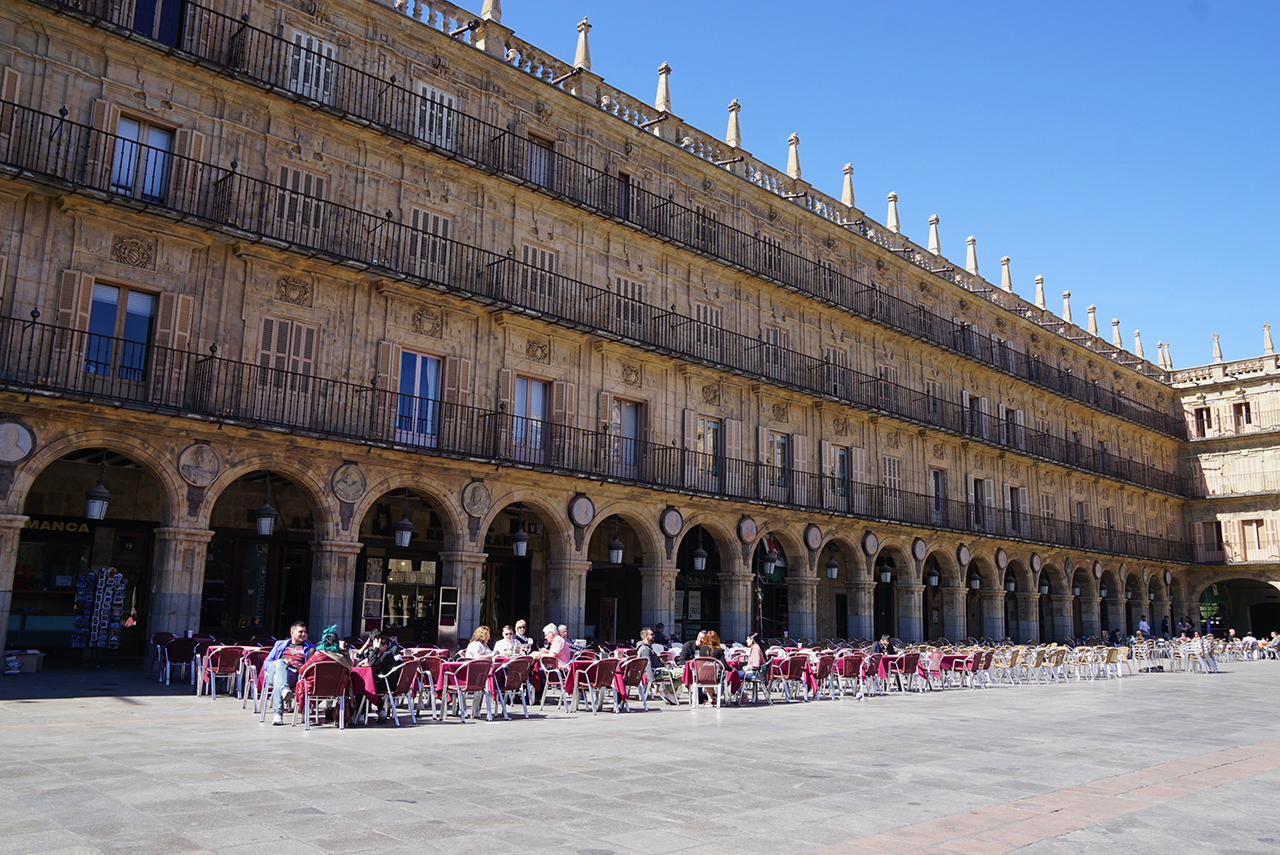
Castilla-La Mancha: Land of Don Quixote and windmills
Further south lies Castilla-La Mancha, a region immortalized in the adventures of Don Quixote, penned by literary master Miguel de Cervantes. This land, dotted with iconic windmills and castles, epitomizes the imagery of classical Spain. Its arid plains and vineyards produce the famed Manchego cheese and saffron, two pillars of Spanish cuisine.
The towns of Toledo and Cuenca, both UNESCO World Heritage Sites, capture the region’s historical wealth. Toledo, once the capital of the Spanish Empire, is a melting pot of Christian, Jewish, and Muslim heritage, earning it the moniker “City of Three Cultures.” Its winding streets tell tales of empires, while the opulent El Greco artworks add to its artistic legacy.
Cuenca, dramatically perched on the edges of deep gorges, is famed for its “hanging houses” (Casas Colgadas) and is a marvel of medieval engineering. Meanwhile, the region’s smaller towns, like Almagro and Consuegra, transport visitors to bygone eras through their well-preserved architecture and age-old traditions.
In the heartland of Spain, the past is not a distant memory but a defining layer of everyday life. The relics of kingdoms, literature, and revolutions are etched into the streets and horizons of Central Spain, inviting travelers to immerse themselves in the stories that sculpted the identity of a nation. Each province contributes a unique verse to this epic, unfolding a saga of resilience, imagination, and the enduring charm of Spanish culture.
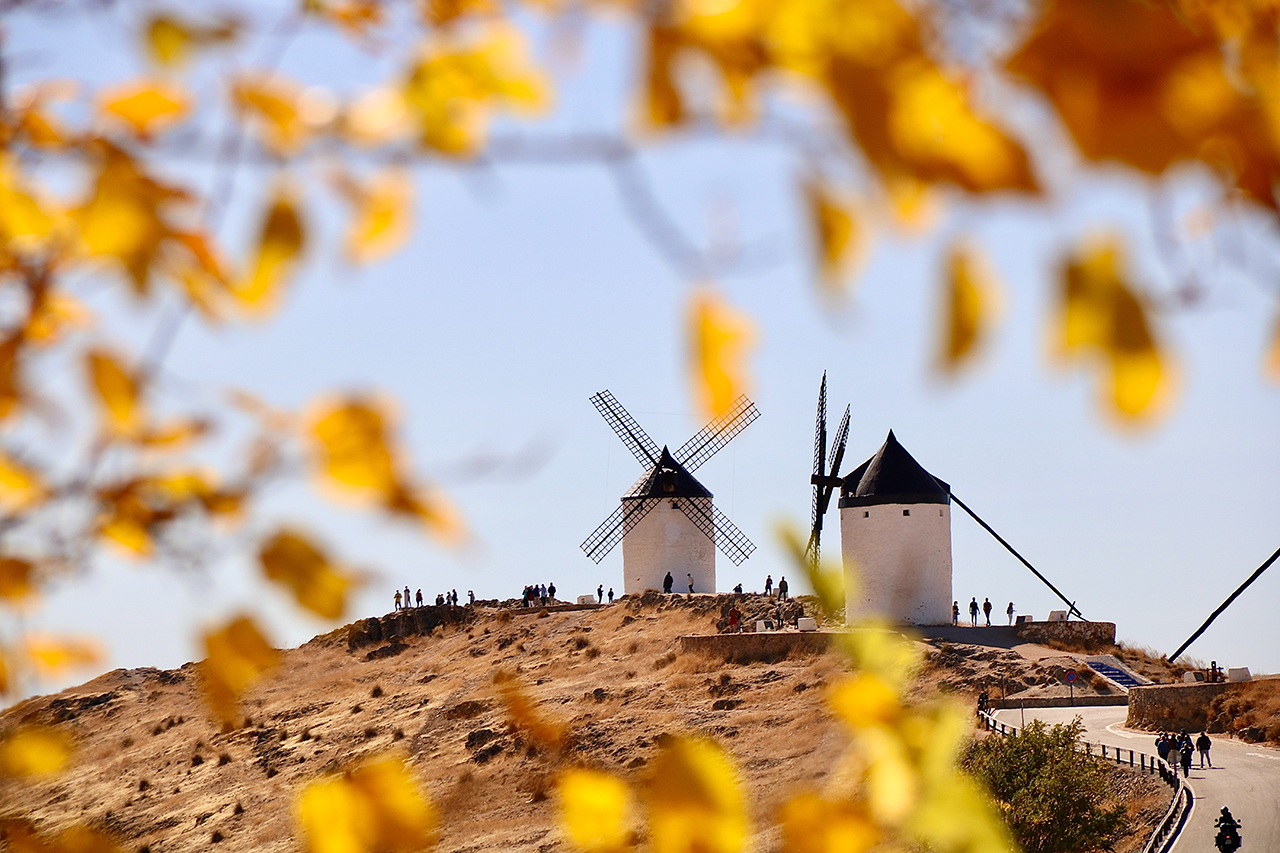
Eastern Spain: Vibrancy along the Mediterranean coast
In the realm of tourism journalism, there’s nothing quite like the vibrant diversity of Spain, a country that melds history, art, and varied cultures within its regions. This diversity is particularly palpable in Eastern Spain, an area marked by its enthusiastic embrace of the Mediterranean Sea, encapsulating a lively spirit and rich cultural heritage. From the art-rich streets of Catalonia to the sun-drenched beaches of the Balearic Islands, Eastern Spain invites travelers to indulge in its unique splendors.
Catalonia: A hotbed of art and independence
Stepping into Catalonia is like walking through an art gallery alive with history and modernity. This region is fiercely proud of its cultural identity, with its unique language (Catalan) and a heritage enriched by the legacies of artists like Salvador Dalí and Antoni Gaudí. The architectural marvels of Barcelona, Catalonia’s capital, display a deep artistic history, from the surreal façades of Gaudí’s works to the Gothic spires that dot the skyline. The region’s push for independence is a crucial part of its modern narrative, making it a place where tradition meets contemporary political passion.
For food enthusiasts, Catalonia offers an array of culinary delights, reflective of its cultural autonomy. From the seaside eateries serving fresh seafood to the inland regions offering a range of mountain fare, the Catalan culinary scene is a tapestry of flavors waiting to be explored.
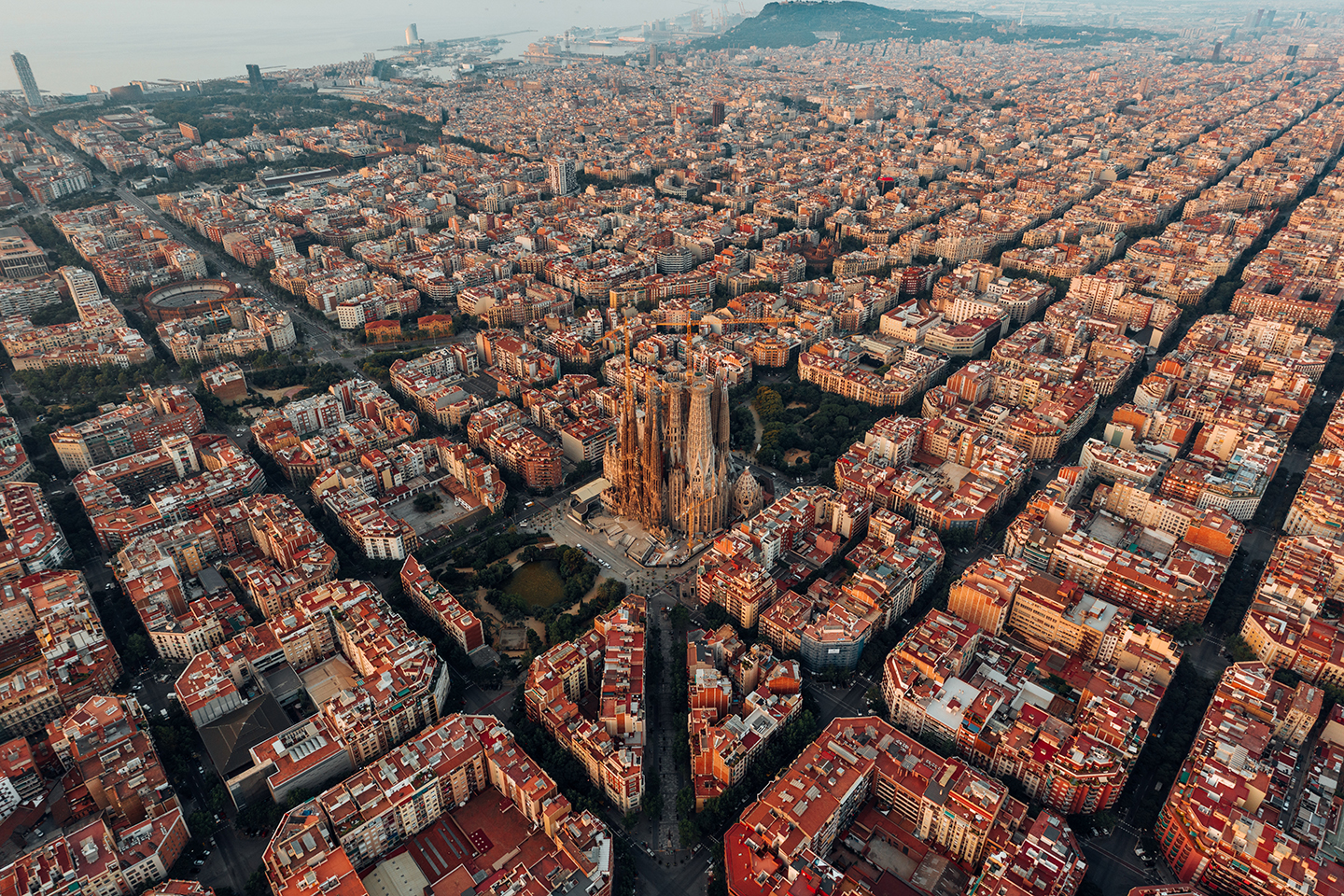
Valencia: The orchard of Spain and home of paella
Valencia is often fondly referred to as the ‘Orchard of Spain,’ a testament to its lush agrarian landscapes that supply a bounty of fruits and vegetables. This region is a harmonious blend of vibrant city life and serene nature. It’s the birthplace of paella, a world-renowned dish that encapsulates the essence of Spanish cuisine with its rich flavors and communal style of eating.
Valencia doesn’t just stop at your taste buds; it extends its allure to your other senses with its Fallas Festival, a UNESCO Intangible Cultural Heritage event. This celebration features monumental artistic installations (ninots), fireworks, and an undeniable community spirit, representing the fire and passion of the Valencian people.
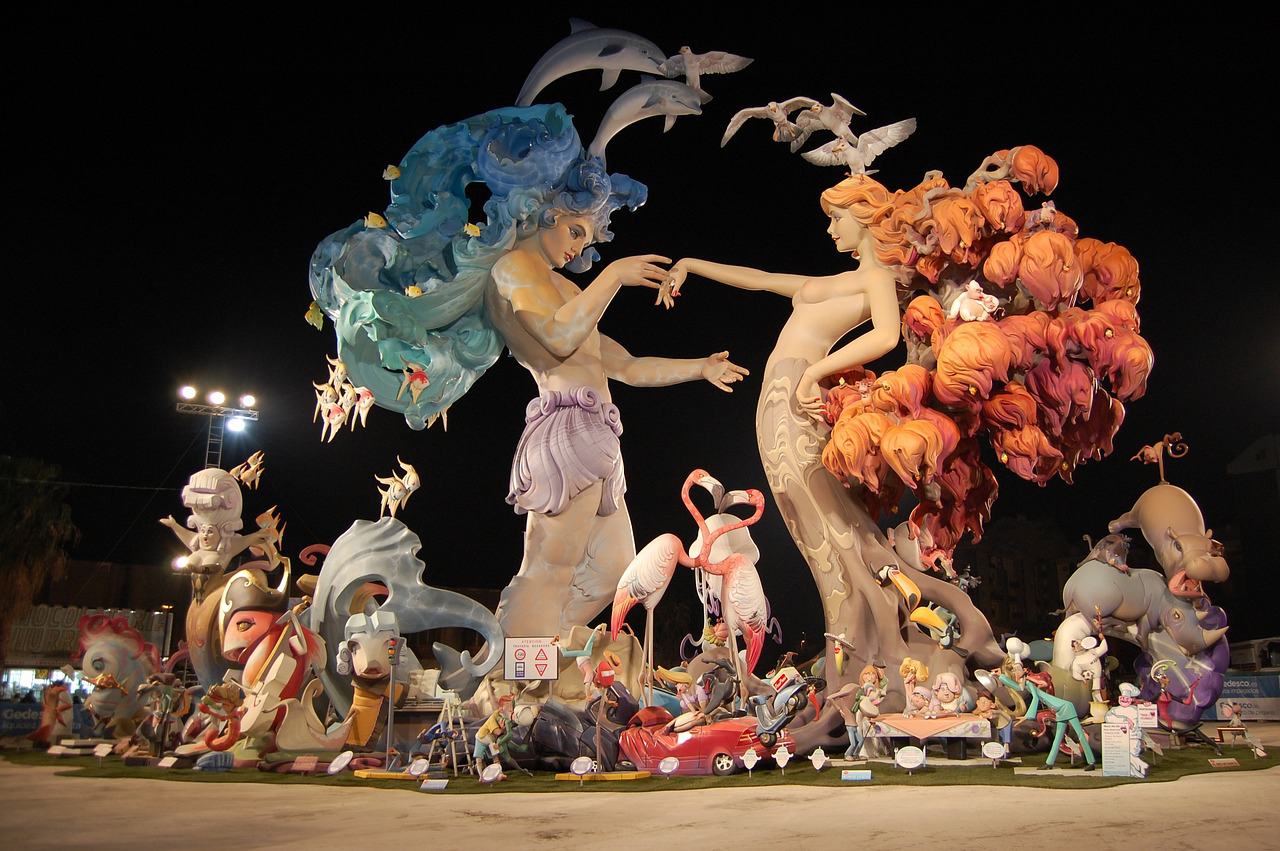
Aragón: Medieval charm and dramatic landscapes
Lesser known but equally captivating, Aragón draws in those who appreciate a slower pace of life accompanied by a rich historical tapestry. The region is replete with medieval monasteries, castles, and villages that seem untouched by time, offering a glimpse into a distant past. The dramatic landscapes of the Pyrenees and the unique wetlands of the Ebro River Delta provide a haven for outdoor enthusiasts, offering activities ranging from hiking and skiing to bird watching.
In cities like Zaragoza, the capital of Aragón, one can witness a blend of architectural styles, from Roman and Moorish to Renaissance and Baroque, illustrating the region’s layered history.
Balearic Islands: Sun-kissed beaches and nightlife
The Balearic Islands are synonymous with pristine beaches, turquoise waters, and a vibrant nightlife. Places like Ibiza, Mallorca, and Menorca offer a sanctuary for those looking to bask in the sun and immerse themselves in the energetic nocturnal scene. Each island, with its character, invites a different kind of traveler: Ibiza with its world-renowned clubs, Mallorca with its picturesque villages and hidden coves, and Menorca with its tranquil environment and biosphere reserves.
But there’s more to these islands than just parties and sand. They host a variety of cultural events, local festivals, and culinary experiences that reflect the rich tapestry of traditions within the Mediterranean lifestyle.
Each of these regions contributes to the multifaceted identity of Eastern Spain. They offer a journey through time, from ancient history to contemporary vibrancy, all unified by a warm, welcoming spirit that is quintessentially Spanish. Travelers to these parts of Spain don’t just visit; they immerse themselves in a lifestyle—a testament to Spain’s enduring charm.
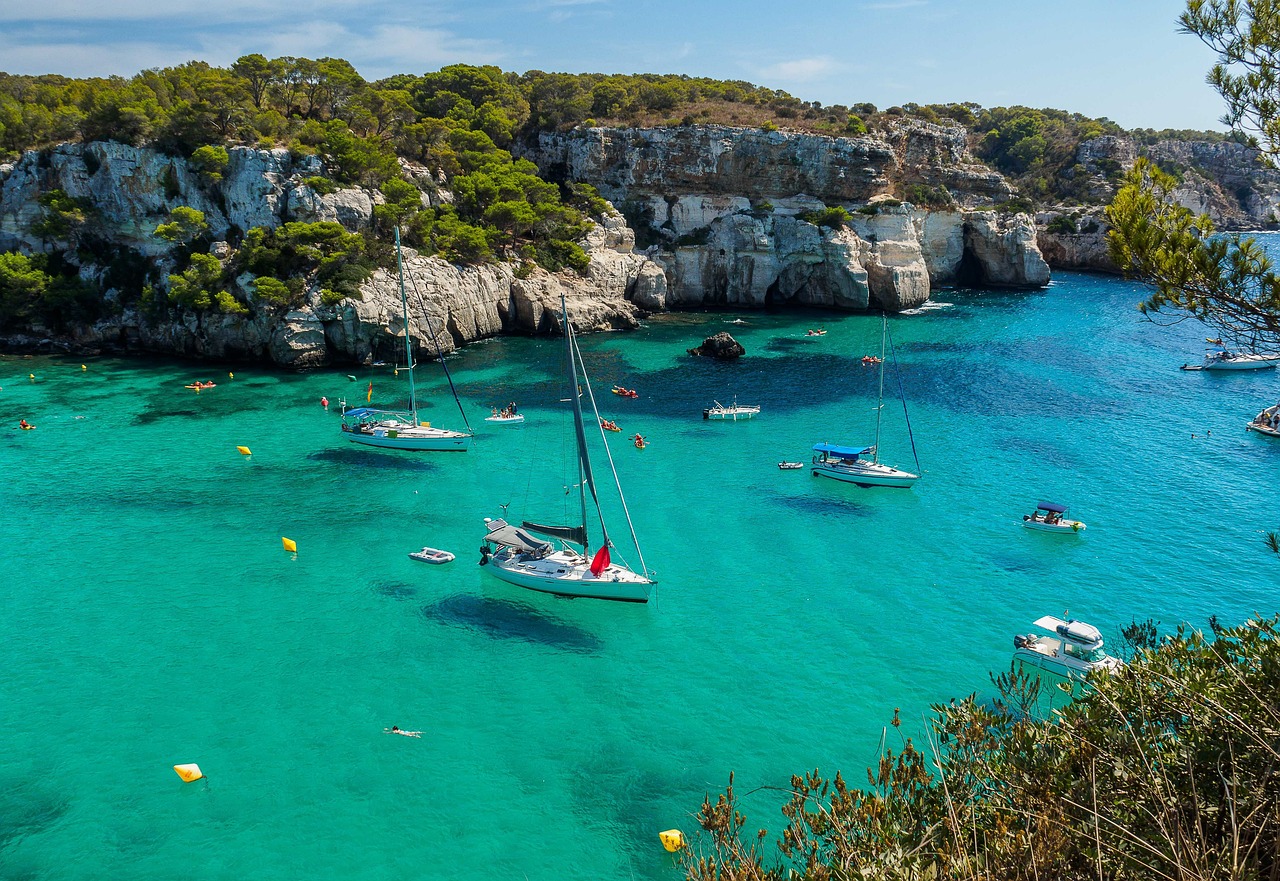
Southern Spain: The exotic and lively Andalucía
In the sun-drenched lands of Southern Spain, there lies a region that pulses with a life force so vibrant it has become a symbol of the country itself: Andalucía. Renowned for its colorful fiestas, intense flavors, passionate art forms, and a history that weaves through its streets, this region is a treasure trove of experiences that invoke both the soul’s fire and the heart’s longing for beauty.
Overview of Andalusian vibrance and heritage
Andalucía is a land where every corner is steeped in a rich historical tapestry, and every celebration is a reminder of its deep-rooted traditions. This region, most southern of Spain’s autonomous communities, is a mosaic of contrasts: from the snow-capped peaks of the Sierra Nevada to the sun-blasted plains of the Guadalquivir River Basin, it is a geographical poetry in motion.
Here, cultures have collided and coexisted for centuries, from ancient Romans and vanquishing Moors to Catholic monarchs and modern-day revelers. Each group has left indelible marks on the region’s identity, contributing to the unmistakable Andalusian heritage that thrills the hearts of travelers.
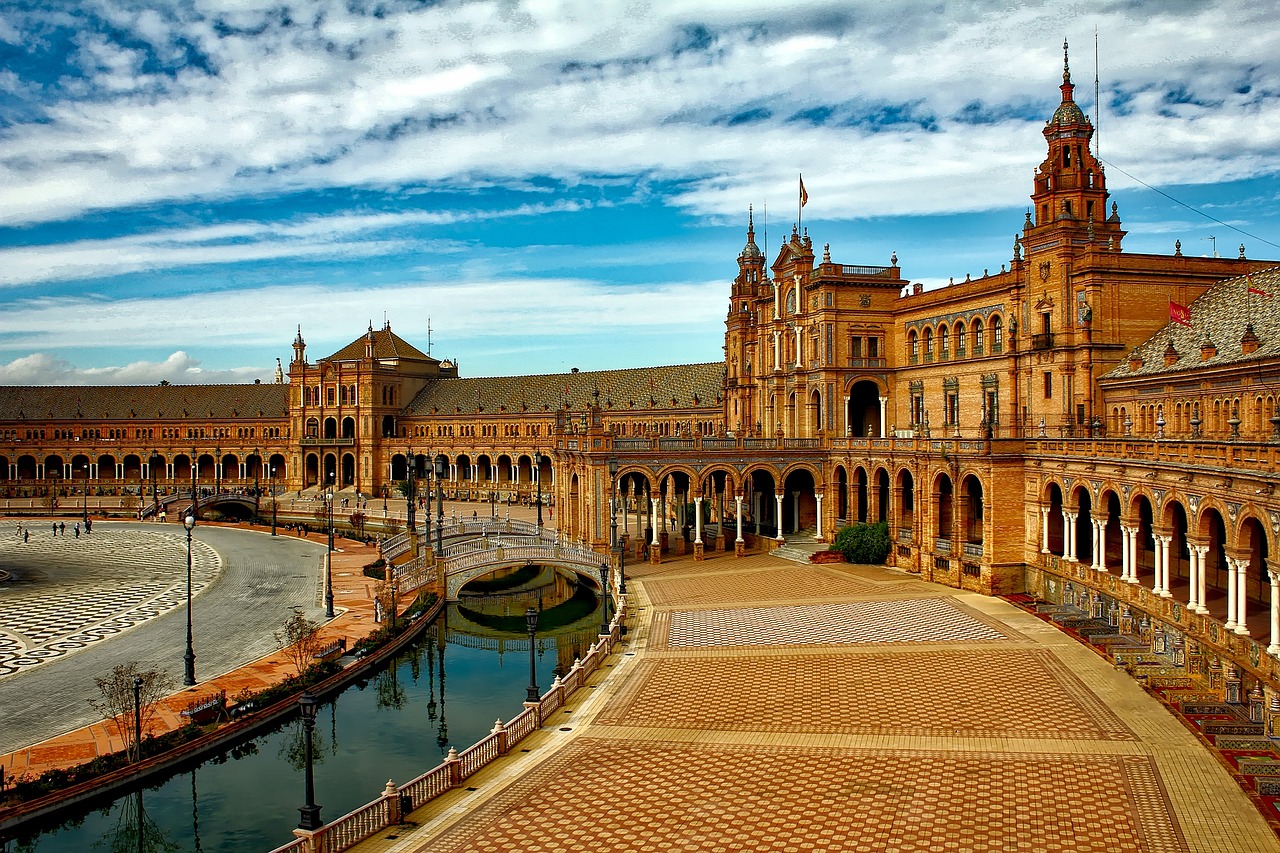
Flamenco, bullfighting, and Gothic Architecture
A discussion of Andalucía would be incomplete without paying homage to Flamenco. This passionate dance, with its profound emotions and breathtaking movements, is a powerful expression of the Andalusian spirit. Originating from the region’s Gypsy community, Flamenco has transcended its roots to become a symbol of Spanish culture, drawing countless visitors eager to witness its intensity and grace.
Yet, the cultural richness doesn’t stop there. Andalucía is often seen as the birthplace of the controversial and traditional spectacle of bullfighting. While modern sentiments grapple with the ethics of this practice, it remains a significant aspect of the region’s culture, encapsulating a historical form of artistry, bravery, and contest between man and beast.
Architecturally, Andalucía narrates a story that spans centuries. The gothic grandeur stands testament to religious and royal influences, with structures such as the Seville Cathedral taking center stage with its intricate designs and imposing presence. This style, though, is just one chapter in a larger architectural anthology that includes Roman ruins, Renaissance palaces, and Baroque churches, each more awe-inspiring than the last.
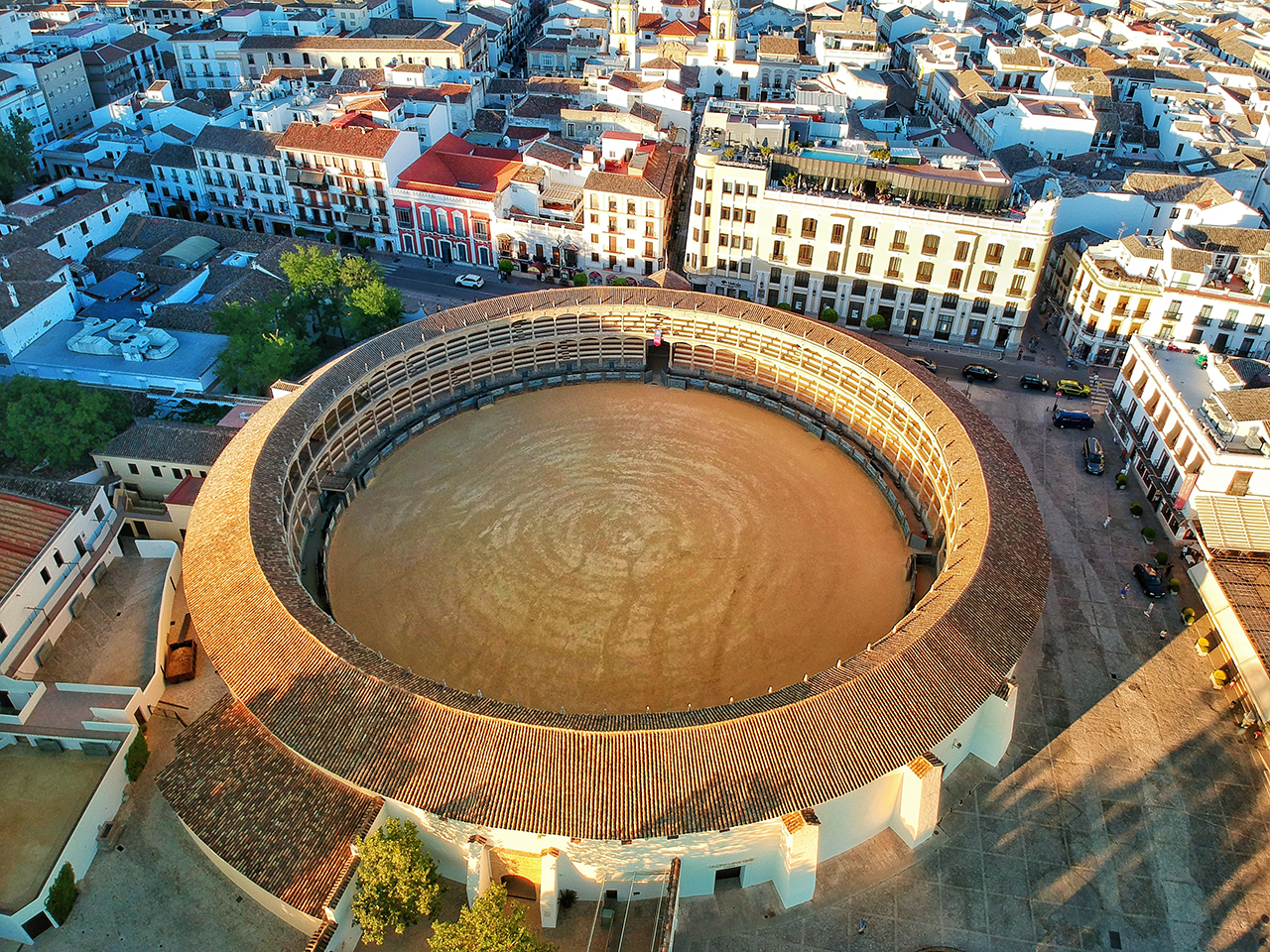
The lasting influence of moorish Spain
The Moors, who ruled over Spain for nearly 800 years, imparted an invaluable and lasting legacy, particularly evident throughout Andalucía. Nowhere is this influence more striking than in the stunning palatial complex of the Alhambra in Granada. This fortress-palace-garden, with its detailed mosaics, arabesques, and rhythmic intertwining of wood and stone, epitomizes Moorish architectural sophistication and artistic vision.
In cities like Córdoba, the multicultural layering is palpable at sites like the Mezquita, an Islamic mosque-cathedral that serves as a timeline of religious power shifts, marked by its forest of columns and ornate arches.
Moreover, the region’s cuisine, infused with spices, reminds us of its Eastern influences, while the white-washed villages with cobblestone streets, known as “pueblos blancos,” nestle in the hillsides, painting a picture straight out of a storybook.
In conclusion, Andalucía is not just a destination; it’s an experience that vibrates with the echo of its history, the pulse of its traditions, and the warmth of its people. Each city offers a different rhythm, and every tradition opens a window into the soul of a region that, with its mix of cultural influences and legendary hospitality, stands as a testament to the identity of a diverse and historical Spain.

The unique communities: Regions with distinct identities
In the rich tapestry that is Spain, several regions boast such distinct identities that they almost seem like countries of their own. Within the broader narrative of Spanish culture, these areas — with their unique histories, climates, and traditions — contribute significantly to the nation’s incredible diversity. In this chapter, we turn our gaze towards these remarkable enclaves: Navarre, Extremadura, Murcia, and the Canary Islands, each one brimming with its own set of wonders and experiences.
Navarre: A confluence of Basque and romanesque
Tucked in the northern part of Spain, Navarre is a realm where the proud Basque culture merges with the Romanesque legacy, creating a region rich in historical landmarks, fortified medieval villages, and stunning natural scenery. From the energetic festivities of the San Fermín in Pamplona — home to the world-renowned Running of the Bulls — to the serene trails of the Pyrenees, Navarre offers a blend of excitement and tranquility.
Its architectural landscape is dotted with imposing fortresses and serene monasteries, reflecting the Romanesque style that speaks volumes of its past. Yet, the whispers of the Basque identity are evident, particularly in the region’s cuisine and its deep respect for age-old traditions, making a visit to Navarre a journey through layers of vibrant culture.
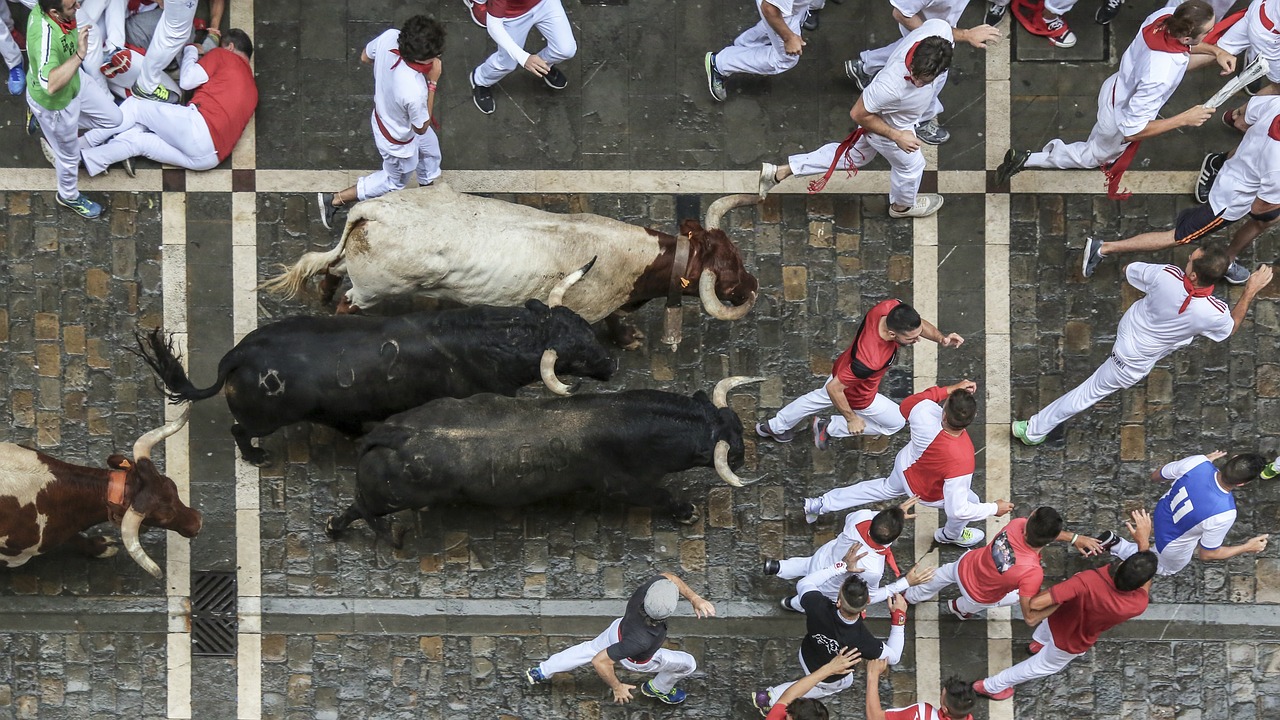
Extremadura: Rugged landscapes and conquistadors’ home
Moving southwest, we encounter Extremadura, a region that boasts vast natural reserves, ancient Roman ruins, and the birthplaces of famous conquistadors. It’s a land characterized by its rugged terrain, with valleys and mountains that have shaped the hardy spirit of its inhabitants.
Historically, it’s the cradle of legendary figures such as Hernán Cortés and Francisco Pizarro, who left to conquer empires and whose legacies are remembered in the ancestral homes and stately museums. The region’s rich culinary scene, specializing in savory cured ham and smoked paprika, is equally matched by its prestigious Roman past, visible in sites like Mérida’s astounding ensemble of preserved monuments.
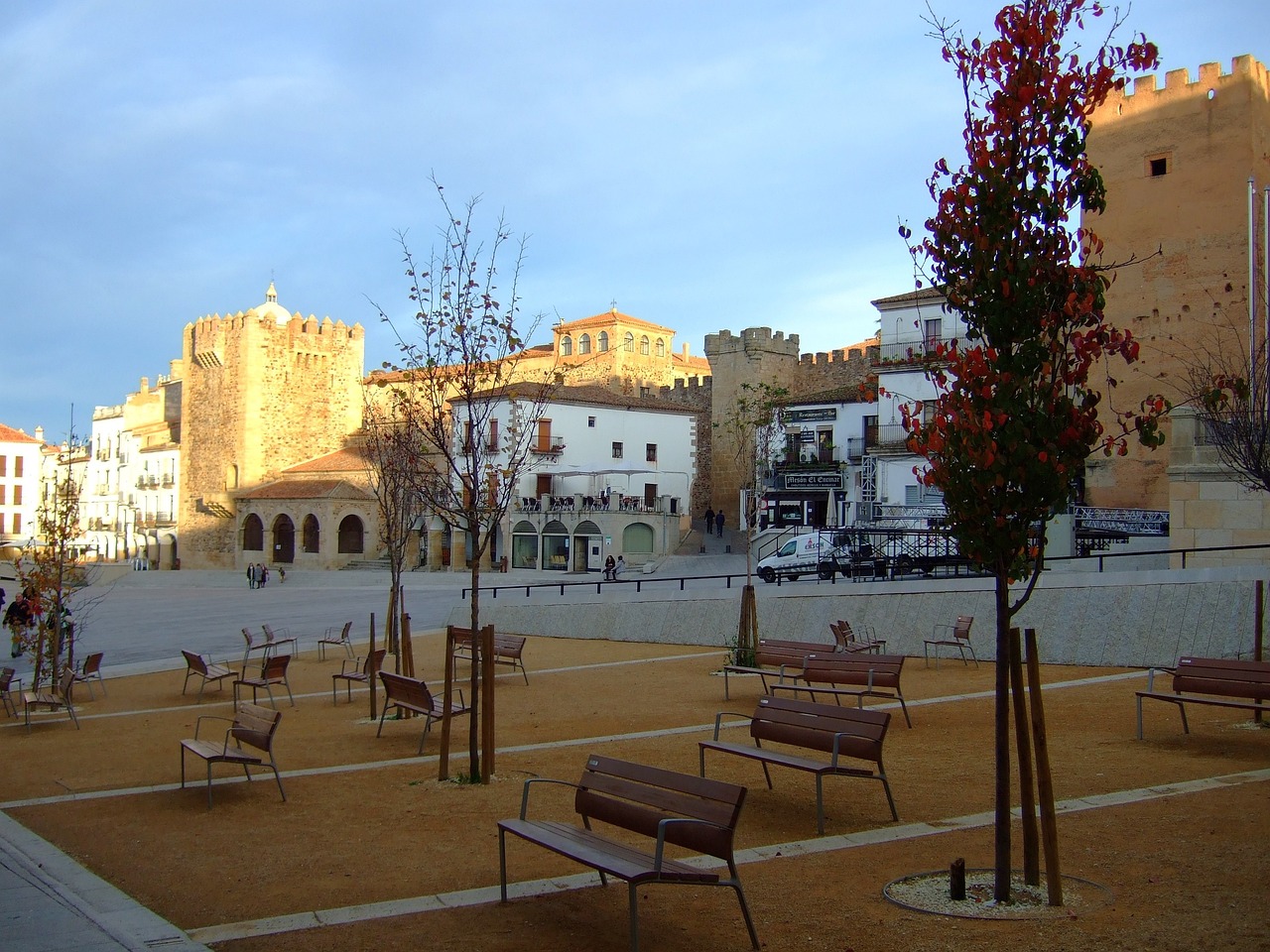
Murcia: The fertile garden of huerta
In contrast to the rugged expanses of Extremadura, Murcia revels in its reputation as Spain’s orchard. Nestled between Andalucía and Valencia, its landscape is a patchwork of fruit trees, vegetables, and flowers, thanks to the fertile plains of the Segura River. This ‘Huerta’ is a testament to ingenious ancient irrigation practices, transforming a once arid zone into an agricultural haven.
Murcia’s capital, also named Murcia, invites with its impressive Baroque cathedral and bustling plazas, while the coastline, known as the Costa Cálida, attracts with warm, clear waters and unspoiled beaches. The local cuisine, heavily influenced by its bountiful produce, offers a variety of rice dishes, salads, and seafood, promising a delightful gastronomic experience.
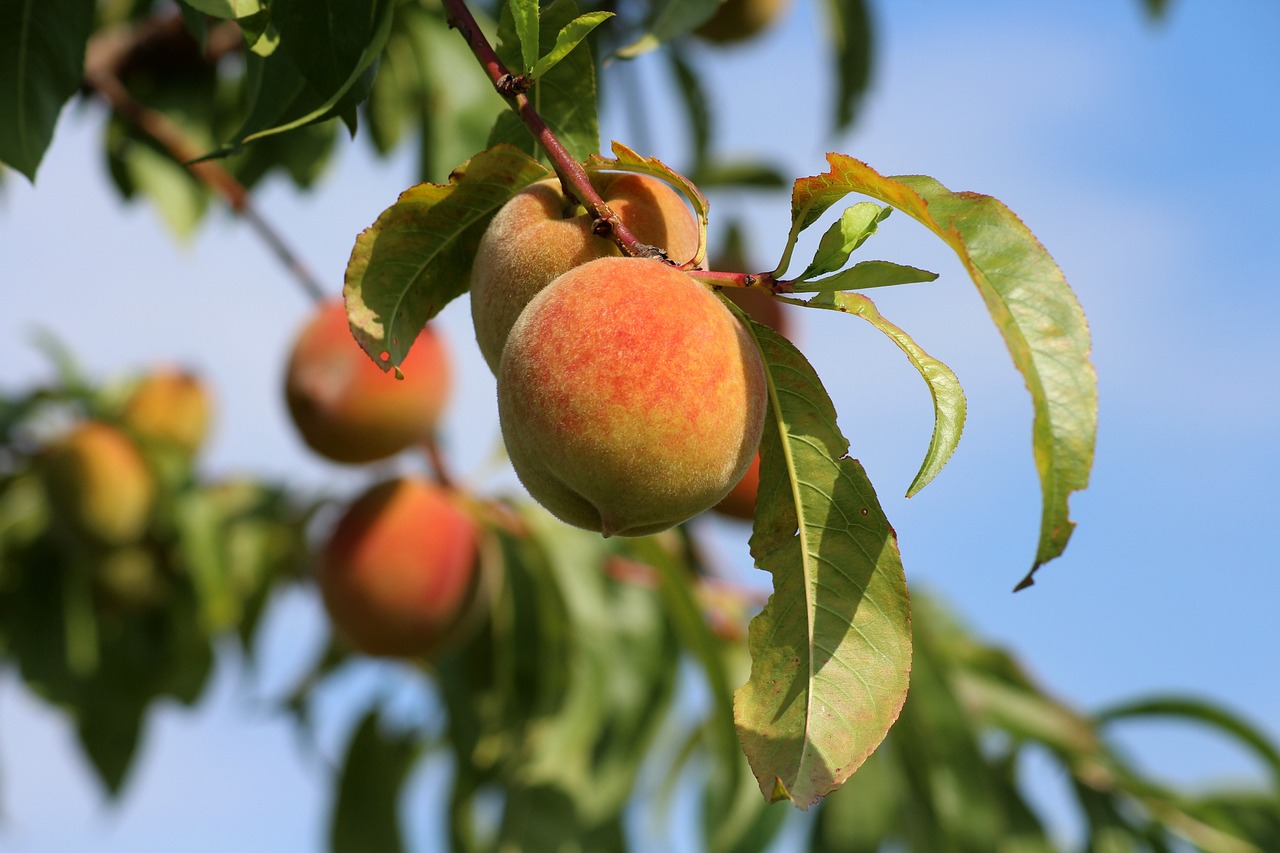
Canary Islands: A mixture of african, latin, and spanish cultures
Venturing off the mainland, the Canary Islands erupt from the Atlantic in a burst of volcanic landscapes, lush forests, and vibrant beaches. This archipelago marries Spanish culture with African proximity and Latin American ties, birthed through centuries of navigation and trade.
Each island enchants with its personality: from Tenerife’s carnival fever to Lanzarote’s lunar-like terrain and La Gomera’s whistling language, ‘Silbo Gomero’. Their unique location creates an extraordinary climate, promoting biodiversity that ranges from deserts to rainforests, while the fusion cuisine and spirited music reflect a melange of cultural influences.
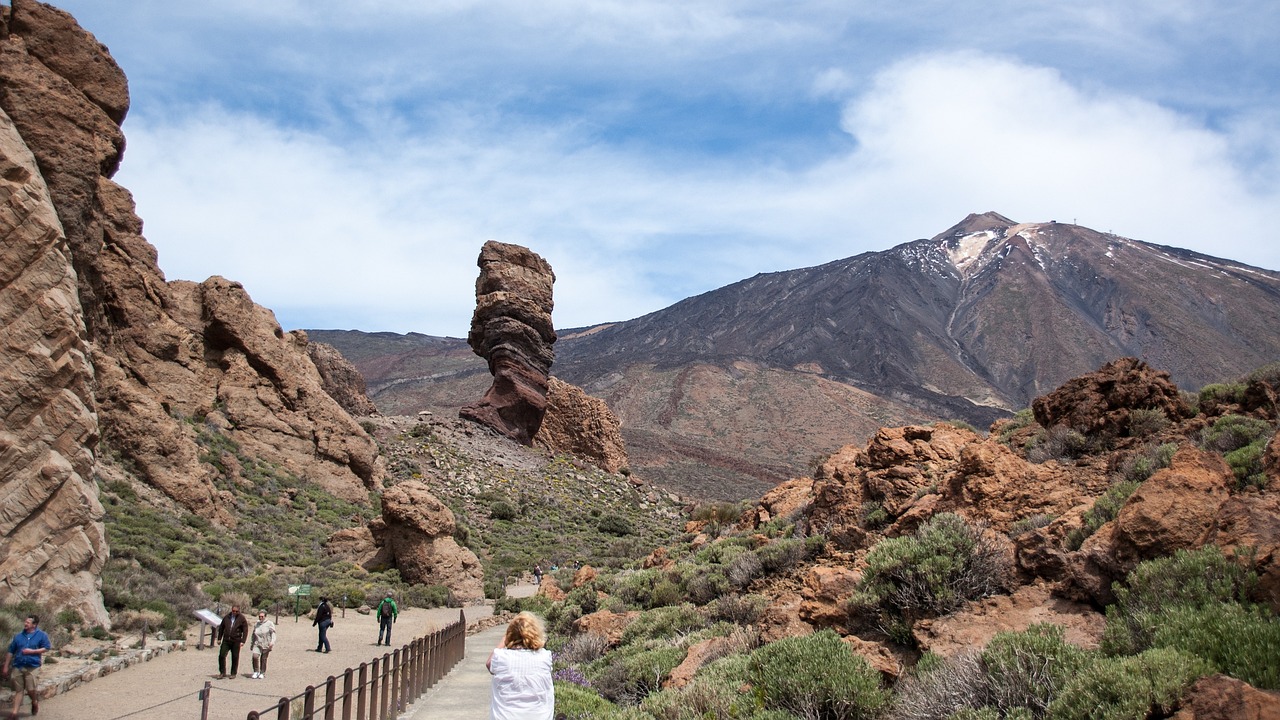
Be it through the solemn echoes of historical grandeur, the joyous celebrations of fruitful harvests, or the tranquil beauty of untouched nature, these regions exemplify the eclectic charm that Spain offers. Through understanding and experiencing these unique communities, one grasps a more profound, more intimate portrait of Spanish soul — one that defies the constraints of borders and revels in the beauty of diversity.
Conclusion
In the concluding segment of our in-depth exploration, we reflect on the vibrant mosaic that is Spain — a nation unparalleled in its regional diversity. Each province, autonomous community, and local district adds a unique shade to the broader picture of Spanish culture, history, and natural beauty. Understanding these differences and embracing each area’s peculiar charm doesn’t just enrich a traveler’s journey; it’s the essence of truly experiencing Spain.
The melting pot of spanish regions
The term ‘melting pot’ is perhaps the most apt description of Spain’s regional tapestry. From the green-carpeted mountains of the north to the Moorish architectural influences in the south, and from the cutting-edge metropolis of Madrid to the ancient, stony villages of Catalonia, Spain offers a world within a country. Each region proudly showcases its heritage, creating a cultural richness rarely matched elsewhere.
It’s not just about the sights, the sounds, or the tastes; it’s about the stories. Every local dance has roots in centuries of tradition; each regional dish tells a tale of geographical necessity and cultural exchange. The architectural marvels aren’t just buildings; they’re historical signposts, each stone recounting its saga — of kings and queens, conquests and reconquests, despair and triumph.
Why regional understanding enhances your travel experience in Spain
To the discerning traveler, Spain isn’t a single destination but a collection of many. Each visit to a different region is, in essence, a step into a different realm. Understanding the distinctions of Galician maritime tradition, Andalusian flamenco passion, Basque culinary uniqueness, or the solemn, deep history held in the walls of Castilian monuments means you’re not just touring Spain; you’re living it.
This profound regional understanding opens doors to a more authentic experience. It’s the difference between being a tourist and an explorer. It means you’ll know why a bar in Barcelona feels worlds apart from a tavern in Bilbao. It’s about realizing that the very soil shifts in meaning as you traverse the landscapes — from the pilgrim-trodden paths of Santiago de Compostela to the orange blossoms scenting the air in Valencia.
Your travels become more than just photo opportunities — they turn into personal connections with the land and the people. You’ll find conversations more meaningful when you understand the local pride in a homemade Asturian cider, the significance of a Valencian ‘falla’ festival, or the reverence of a Sevillano for their tradition of bullfighting.
In the end, the beauty of Spain lies in this incredible diversity, making each visit a new discovery, an altered perspective, a fresh story. Whether you’re standing on the sun-baked soil of an Andalusian vineyard, under the shadow of the snow-capped Pyrenees, or beside the gentle lapping waves of the Mediterranean in a sleepy coastal town, you’ll know: this is not just Spain. This is a kaleidoscope of cultures, histories, and lives — and it is splendid, in every sense of the word.





